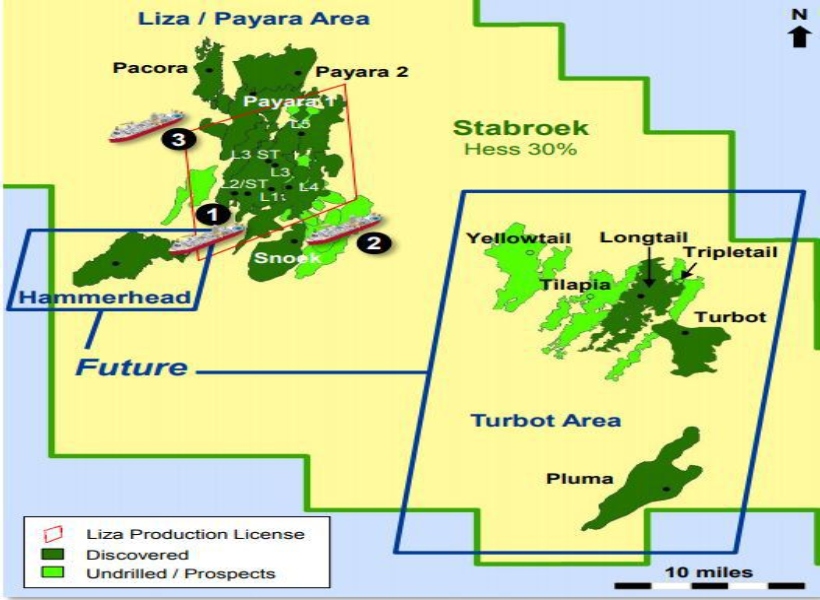ExxonMobil’s Yellowtail Project, the fourth to be developed in the Stabroek Block, is slated to add 250,000 barrels of oil per day by 2025. Already, the Liza Phase One is producing 120,000 barrels of oil per day while Liza Phase Two which comes on stream next year will add 220,000 barrels of oil daily. Payara, the third development which is slated for start-up in 2024 will have a production capacity of 220,000 barrels of oil per day. It therefore means that by 2025, Guyana will be producing over 800,000 barrels of oil per day.
With regard to the details of the Yellowtail development, ExxonMobil’s subsidiary, Esso Exploration and Production Guyana Limited (EEPGL), noted in project documents submitted to the Environmental Protection Agency (EPA) that plans are progressing for the Yellowtail Project, located in the eastern portion of the Stabroek Block, approximately 200 km from Georgetown and southeast of the Stabroek Projects (see map attached to article). EEPGL noted that current plans include drilling via floating drillship to produce oil, from approximately 45-55 wells. Production from this project is expected to last at least 20 years.
The production facilities to be installed include subsea equipment attached to the seafloor as well as processing equipment on the ocean’s surface known as a Floating, Production, Storage, and Offloading (FPSO) vessel. The subsurface equipment is expected to be installed at approximately 1,700 – 1,950 m of water depth. The main pieces of kit in the subsurface include the following: production tree, production manifold, flowlines, risers, and umbilicals. The subsurface umbilicals, risers, and flowlines are commonly referred to as SURF.
Building on the previous Stabroek Projects, EEPGL said Yellowtail will be designed to demonstrate continuous improvement in environmental performance. EEPGL in this regard said it routinely strives to make improvements in environmental performance through emissions controls, technology enhancements and process improvements. Expounding further, the subsidiary said in 2020, the FPSO Liza Destiny experienced unanticipated technical challenges and unplanned gas flaring during its start-up and commissioning process.
As a result of the foregoing, EEPGL said it conducted comprehensive root cause analyses of these issues, and evaluated potential improvements to gas handling systems, sparing philosophy, and execution procedures. The company assured the EPA that it plans to take significant steps to incorporate the lessons learned from the commissioning of the Liza Destiny into future projects, including Yellowtail.
Like the Stabroek Projects, the Yellowtail Development Project (Yellowtail or Yellowtail Project) will utilize marine support vessels as well as onshore infrastructure, including but not limited to shore bases, warehouses, storage and pipe yards, fabrication facilities, fuel supply facilities, and waste management facilities in Guyana. Such infrastructure will be used to support the drilling, installation, production operations, and decommissioning stages of Yellowtail.













